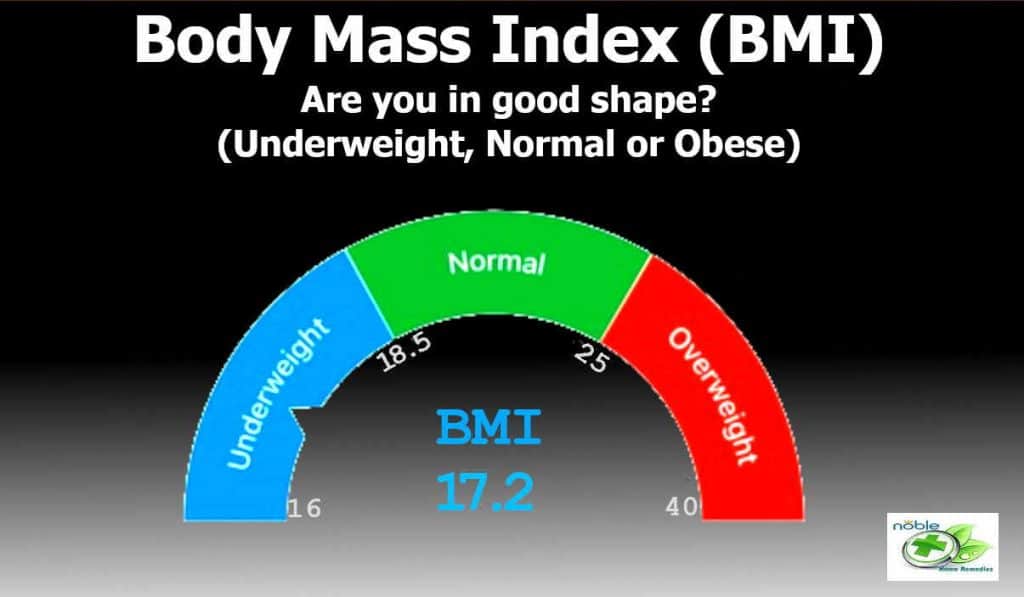Is Coffee an Acid or a Base?: Does Morning Coffee Hurt You?
Have you ever wondered whether your morning cup of coffee is an acid or a base? It’s a question that seems straightforward, yet the answer can be surprisingly complex. Understanding the acidity or basicity of coffee can have a significant impact on its taste, health benefits, and even its effect on your body.
In this article, we’ll delve into the topic of coffee’s acidity and basicity to answer the question, “Is coffee an acid or a base?” We’ll explore the following:
- the science behind coffee’s pH level,
- how it affects the taste and quality of coffee
- why it’s essential to know whether your black coffee is acidic or basic and
- the potential health benefits and drawbacks of drinking acidic or basic coffee
Whether you’re a coffee lover or simply curious about the chemistry of your morning cup, this article will provide you with a comprehensive overview of coffee’s acidity and basicity. So please sit back, sip your coffee, and let’s explore the perplexing world of coffee’s pH level.
What is pH?
To understand whether coffee is an acid or a base, we need to first understand what pH is. pH is a measure of the acidity or basicity of a solution, and it is expressed on a scale ranging from 0 to 14. A pH of 7 is considered neutral, while values below 7 indicate acidity and values above 7 indicate basicity.
The pH scale is logarithmic, which means that each change in one unit on the scale represents a tenfold change in acidity or basicity. For example, a solution with a pH of 3 is ten times more acidic than a solution with a pH of 4.
In the case of coffee, the pH level can range from 4 to 7, depending on the type of coffee and how it’s prepared. This means that coffee can be either slightly acidic or slightly basic, but generally, it is considered to be acidic.
Understanding the pH of coffee is essential because it can affect the taste, quality, and health benefits of coffee. For example, acidic coffee tends to have a bright, tangy flavor, while basic coffee can taste flat and dull. Additionally, the pH level of coffee can affect its antioxidant content and potential health benefits.
So, if you’re a coffee enthusiast or just curious about the chemistry of your favorite drink, it’s crucial to understand the role of pH in determining whether coffee is an acid or a base. By knowing the pH level of your coffee, you can make plans about how to prepare and enjoy your coffee, and potentially even reap some health benefits.
Is coffee an acid or a base?

Determining whether coffee is acidic or basic can be a complex task. The acidity or basicity of a substance depends on the concentration of hydrogen ions (H+) and hydroxide ions (OH-) in a solution. If a solution has more H+ ions than OH- ions, it is considered acidic. If it has more OH- ions than H+ ions, it is basic.
In the case of coffee, there are several factors that can influence its pH level. The type of coffee beans used, the method of brewing, and the roast level can all affect the acidity or basicity of the final product. For example, darker roasts tend to be less acidic than lighter roasts, while cold-brewed coffee can have a higher pH level than traditionally brewed coffee.
Recent scientific research has shed some light on coffee’s acidity or basicity. Studies have found that coffee is generally considered acidic, with a pH level ranging from 4 to 7. However, the exact pH level can vary depending on the type of coffee and how it’s prepared.
Different types of coffee can also have varying pH levels. For example, espresso tends to be more acidic than drip coffee, while decaf coffee can be less acidic than regular coffee. Additionally, some coffee substitutes, like chicory, can be highly basic.

Note that pH levels can vary depending on factors such as brewing method, roast level, and water quality, so these above values are approximate ranges.
Understanding the acidity or basicity of your coffee can have a significant impact on your enjoyment and potential health benefits. For example, people with acid reflux or heartburn may find that drinking less acidic coffee can alleviate symptoms. Additionally, research has suggested that coffee’s antioxidant content and potential health benefits may be influenced by its acidity or basicity.
Why is coffee an acid or not may seem like a straightforward question, it is, in fact, a complex topic. The pH level of coffee can be influenced by a range of factors, and different types of coffee can have varying levels of acidity or basicity.
Why does coffee’s acidity or basicity matter?
The acidity or basicity of coffee may seem like an insignificant concern, but it can have a significant impact on both taste and health. Here are some reasons why coffee’s pH level matters:
| Type of Coffee | |
|---|---|
| Espresso | 4.7 – 5.9 |
| Drip Coffee | 4.8 – 5.5 |
| Cold Brew | 6.0 – 6.5 |
| Instant Coffee | 4.9 – 5.2 |
| French Press | 6.5 – 6.9 |
| Turkish Coffee | 4.0 – 5.0 |
Impact of pH on the taste and flavor of coffee:
The acidity or basicity of coffee can have a significant impact on its taste and flavor. Acidity can contribute to the brightness and complexity of coffee’s flavor profile, while basicity can create a smoother, less bitter taste.
For some coffee lovers, the acidity of a coffee is a desirable trait, while for others, it may be a turn-off. By understanding the pH level of your coffee, you can select the right beans and brewing method to achieve your preferred flavor profile.
Relationship between pH and health effects of coffee consumption:
Coffee consumption has been associated with a range of potential health benefits, including a reduced risk of type 2 diabetes, liver disease, and certain types of cancer. However, the health effects of coffee may be influenced by its acidity or basicity.
For example, some studies have suggested that highly acidic coffee can exacerbate acid reflux or heartburn symptoms in some individuals. Additionally, coffee with a lower pH level may have a more significant impact on blood sugar levels, which could affect the risk of developing type 2 diabetes.
Impact of coffee’s pH on digestive health:
The acidity or basicity of coffee can also impact digestive health. Highly acidic coffee may irritate the lining of the stomach or exacerbate symptoms of gastrointestinal disorders, such as ulcers or irritable bowel syndrome. On the other hand, less acidic coffee may be easier on the digestive system, and stomach acid and cause fewer side effects.
The acidity or basicity of coffee is not just a matter of taste preference; it can have a significant impact on our health and well-being. Understanding the acidity or basicity of coffee helps to determine how much to drink and when to consume it to avoid potential digestive discomfort. Also, you can help yourself to target your coffee consumption habits and potentially reap some health benefits.
How to Reduce the Acidity of Coffee
If you’re concerned about the acidity of coffee, there are a few ways to reduce it. One way is to choose low-acid coffee beans, such as beans from Brazil or Sumatra. Another way is to use a cold-brew method, which produces a less acidic cup of coffee.
You can also add milk or cream to your coffee, as the fat in these dairy products can help neutralize the acidity. On top of that ph of coffee with milk reduces the pH levels of coffee. This is because milk is much less acidic compared to coffee.
Alternatively, you can try adding a pinch of baking soda to your coffee grounds before brewing, as baking soda is a base and can help counteract the acidity.
Does cinnamon reduce acid in coffee? The answer is yes. Because cinnamon is a natural antacid with anti-inflammatory and antioxidant properties, you could add a pinch of cinnamon powder to coffee to reduce acidity levels.
On the reverse, if you ask the famous question if coffee sobers you after taking alcohol. The answer is no. The pH level of alcohol is 4 or lower and hence it is more acidic.
How do we measure the pH of coffee?
How do you measure the pH of coffee? In this section, we’ll explore different methods and tools that can help you accurately determine the pH of your coffee.

There are several ways to measure the pH of coffee, but some methods are more reliable than others. The most common methods include:
- pH Testing Strips – These strips contain a special type of paper that changes color depending on the acidity or basicity of the substance being tested. To use this method, simply dip the strip into the coffee and compare the color to a chart that comes with the strips. This method is relatively inexpensive and easy to use, but it may not be the most accurate.
- pH Meter – A pH meter is an electronic device that measures the acidity or basicity of a liquid. This method is more accurate than pH testing strips, but it can be expensive and requires calibration before each use.
pH testing kits are a convenient and reliable way to measure the pH of your coffee. These kits usually come with pH testing strips or a pH meter, along with a chart that shows the pH range for different substances. They can be purchased online or at specialty stores that sell coffee equipment.
While each method has its advantages and disadvantages, it’s essential to choose a method that works best for your needs. For example, pH testing strips are inexpensive and easy to use, but they may not be as accurate as a pH meter. On the other hand, a pH meter may provide more precise results, but it can be expensive and may require more skill to use correctly.
Takeaway
In this article, we have explored the question “Is Coffee an Acid or a Base?”. We have learned that pH is a measure of acidity or basicity and that coffee falls on the acidic side of the pH scale. We have also seen that the pH of coffee can vary depending on a number of factors, including the type of coffee bean, the roasting process, and the brewing method.
Understanding the pH of coffee is important for coffee drinkers, as it can have a significant impact on the taste and health effects of coffee consumption. Coffee with a lower pH may be more acidic and cause digestive issues for some people, while coffee with a higher pH may be smoother and easier on the stomach.
To measure the pH of coffee, there are various methods available, including pH testing kits, litmus paper, and digital pH meters. Each method has its own pros and cons, and the choice of method will depend on the individual’s needs and preferences.
In conclusion, while coffee is generally considered to be an acidic beverage, the pH can vary depending on a number of factors. Understanding the pH of coffee can help coffee drinkers make informed decisions about their coffee consumption, and can help them choose the type of coffee that is best suited to their taste and health needs.
Source:
Noble Home Remedies adheres to rigorous sourcing standards, drawing information from peer-reviewed studies, reputable academic research institutions, and esteemed medical journals and associations. We prioritize using high-quality, trustworthy sources to maintain the accuracy and integrity of our content. You can learn more about how we ensure our content is accurate and current by reading our editorial policy.
- Acidity and Antioxidant Activity of Cold Brew Coffee by National Library of Medicine
- Influence of Various Factors on Caffeine Content in Coffee Brews by National Library of Medicine
- Coffee and Health: A Review of Recent Human Research by Taylor and Francis
Trust in your purchase:
Every product featured on our site has been carefully researched and selected based on quality, customer ratings, and positive reviews to ensure you receive excellent value for your money.
Please note:
This post contains affiliate links. If you make a purchase through these links, we may earn a small commission at no additional cost to you. This helps support our site and allows us to continue bringing you valuable content. Thank you!
Thank you for your precious time spent with NobleHomeRemedies.
You may also like:
Natural Blood Cleanser
Top 10 Natural Blood Cleansers: To Purify Your System Our blood plays a vital role…
How to Calculate Body Mass Index (BMI)
How to Calculate Body Mass Index (BMI): Are you obese? The first level of assessment…
Garlic Cabbage Steaks Recipe
Garlic Cabbage Steaks Recipe: Anti-Inflammation Superfood Turning Humble Cabbage into a Healing Meal Are you…
COVID-19 CoronaVirus Symptoms: Prevention, and Awareness
Discvoer: COVID-19 CoronaVirus Symptoms: Prevention, and Awareness The outbreak of the COVID-19 Coronavirus is a…
Owala Water Bottle – FreeSip
Staying hydrated is crucial for our overall health and well-being. Yet, with our busy lives,…
Why Do I Crave Vinegar
Why Do I Crave Vinegar?: 4 Reasons for Your Tangy Cravings Do you ever get…






